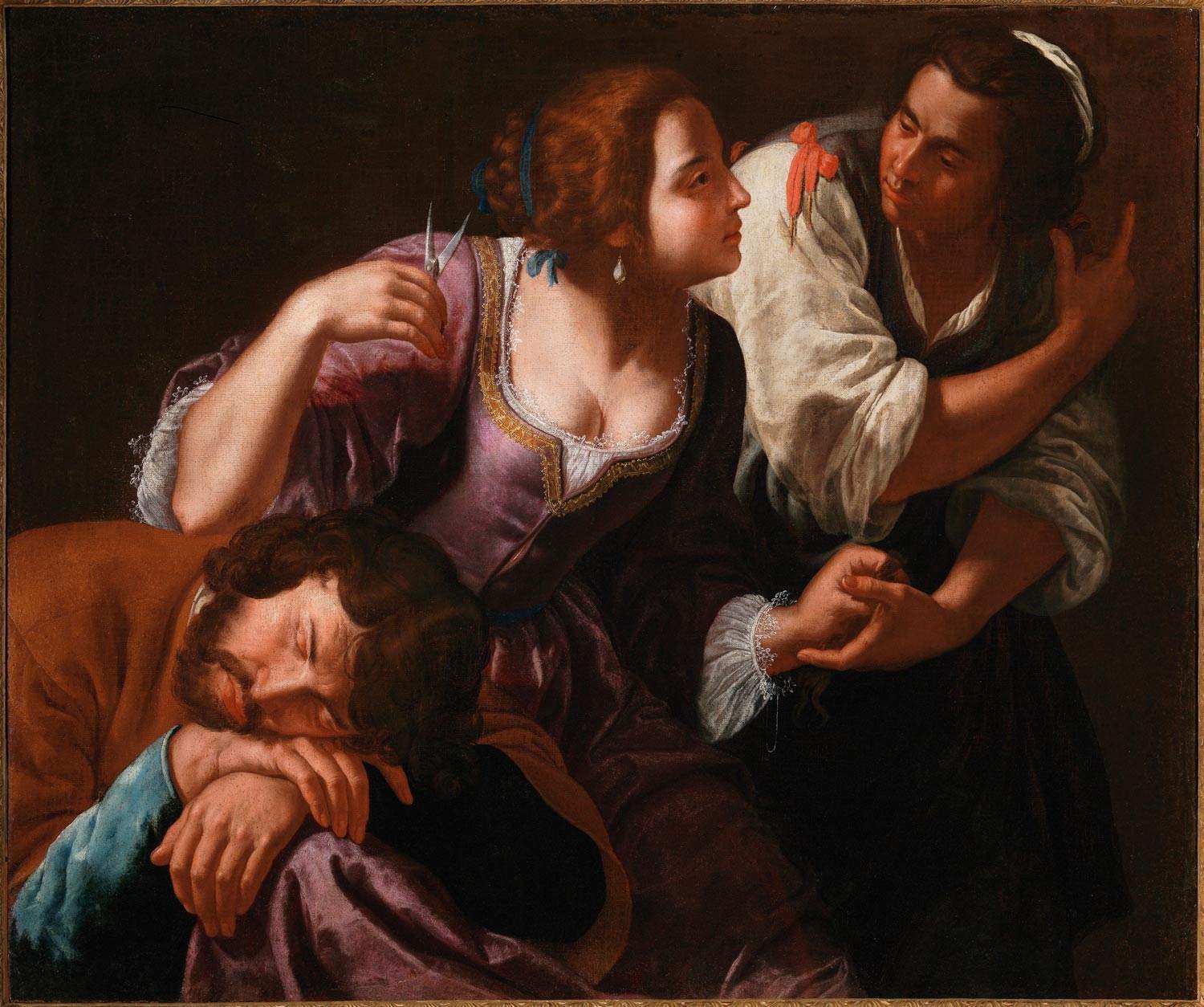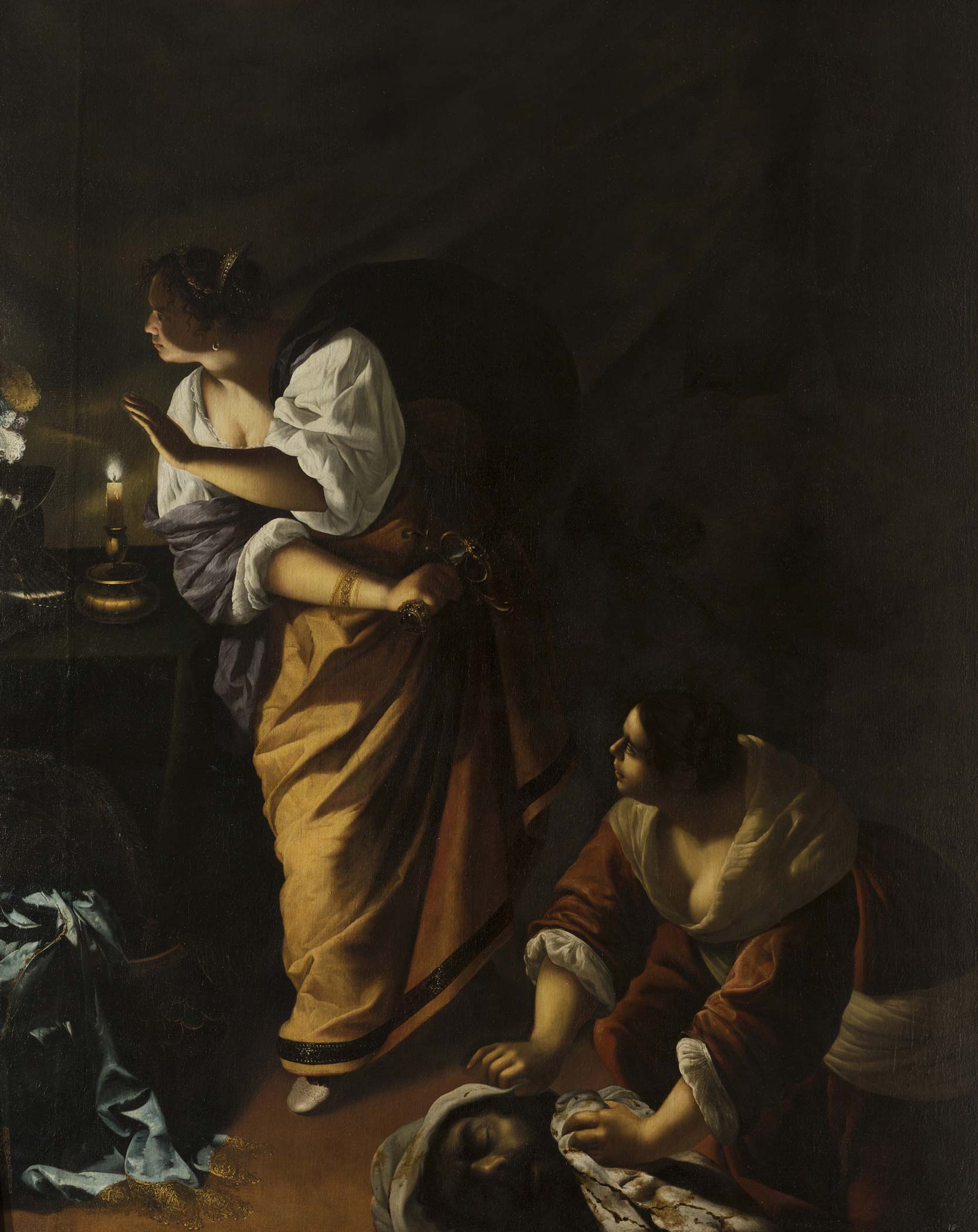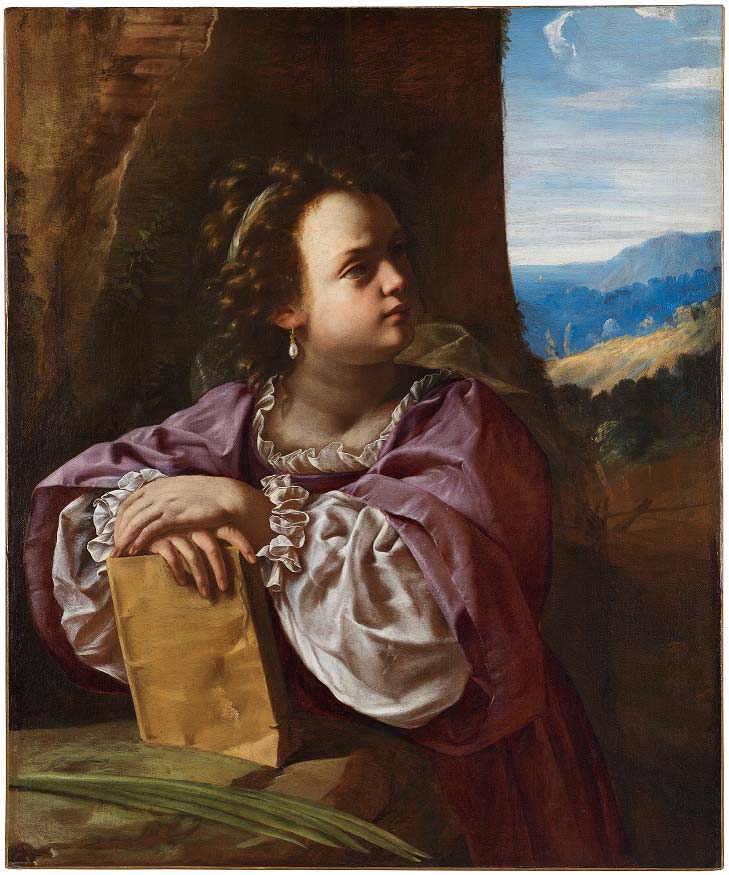From December 3, 2022 to March 20, 2023, the Gallerie d’Italia in Naples will host the first exhibition in the museum’s new home, and it will be dedicated to Artemisia Gentileschi and in particular to her Neapolitan period, the last of her career. The exhibition, entitled Artemisia Gentileschi in Naples, focuses precisely on the painter’s long Neapolitan sojourn, documented between 1630 and 1640 and interrupted only by a trip to London between 1638 and 1640. This is a fundamental chapter in Artemisia’s art and biographical story, which in Naples had never been the subject of a monographic exhibition as extensive as the one scheduled in the via Toledo museum.
The exhibition, produced in special collaboration with the National Gallery in London and in collaboration with the Museo e Real Bosco di Capodimonte and the Naples State Archives, will present a selection of works from public and private, Italian and international collections with the aim of making the exhibition an opportunity to update scientific studies on the subject.
The exhibition narrative intends to proceed according to thematic and iconographic scansion, covering the chronological span in which Artemisia was in Naples, to explore the enormous success she encountered in the capital of the Viceroyalty, and to return a reliable image of the artistic greatness of this complex historical moment. In Naples, in fact, Artemisia implanted a flourishing workshop that collaborated, or simply interacted, with the best local artists, from Massimo Stanzione to Onofrio Palumbo to Bernardo Cavallino. Iconographies and themes already tried and tested by the painter, mainly related to the depiction of female heroines (Judith, Cleopatra etc.), were taken up and put on the market with innumerable variations and entrepreneurial modes. On these themes the exhibition aims to shed light, thanks also to the results of an extensive archival research campaign, conducted for the occasion.







The exhibition presents both works made by Artemisia and works made by first-rate artists closely related to her, mostly active in Naples in the same years as the painter, such as Massimo Stanzione, Paolo Finoglio, Francesco Guarino, Andrea Vaccaro or the rediscovered “Annella” Di Rosa, the leading Neapolitan artist of the first half of the seventeenth century, who was also a victim - according to an ancient but unreliable tradition - of gender violence. The selection of the twenty-one works by Artemisia in the exhibition aims to offer an essential picture of the Neapolitan parable of the “painter,” with its peaks and its still problematic aspects: for the first time, masterpieces such as the youthful Saint Catherine of Alexandria, recently acquired by the National Gallery in London, which constitutes the exhibition’s antecedent, are shown to the Italian public; also, the same Saint from the Nationalmuseum in Stockholm or Judith and the Handmaid with the Head of Holofernes from the Nasjonalmuseet in Oslo. There is also no shortage of the painter’s large and rare public commissions, from theAnnunciation in Capodimonte to two of the three monumental canvases made between about 1635 and 1637 for the choir of Pozzuoli cathedral, St. Gennaro in the amphitheater and Saints Proculus and Nicea, the latter restored for the occasion.
The realization of the exhibition was preceded by intense scientific investigation and archival research that returned new and important material for Artemisia’s biography, which also makes the catalog a fundamental tool for further study, thanks to an accurate documentary record. The circumstances of Artemisia Gentileschi’s arrival in Naples in 1630, directly from Venice, have finally been clarified, as have additional traces for her extreme years, plagued by economic difficulties (confirming the’literary insight of Anna Banti), both her private affair (the concubinage of her daughter Prudenzia Palmira and the reparatory marriage that followed the birth of her grandson Biagio in 1649) and some of the salient aspects of her activity, beginning with the role of viceregal and bourgeois patronage, and ending with the relations between Artemisia and the literary academies, which already in her lifetime contributed to amplify her fame.
Giovanni Bazoli, Chairman Emeritus of Intesa Sanpaolo, says: “It is a source of satisfaction for Intesa Sanpaolo to present in the new Gallerie d’Italia the exhibition dedicated to Artemisia Gentileschi, a distinguished painter of the Italian seventeenth century who was active in Naples between1630 and 1654. The initiative, which features important loans from Italy and around the world, was made possible thanks to a partnership with the National Gallery of London and is part of a wide-ranging project of studies and exhibitions shared with the prestigious British museum on the great artist. With this initiative, our bank confirms its strong link with Naples and its commitment to enhancing the city’s cultural identity in a European and international perspective.”
The exhibition at the new Gallerie d’Italia in Naples was created as a deepening of the monographic exhibition dedicated to the artist at the National Gallery in London in 2020, and features Gabriele Finaldi as specialist advisor and is curated by Antonio Ernesto Denunzio and Giuseppe Porzio. The exhibition catalog is produced by Edizioni Gallerie d’Italia | Skira. Hours: Tuesday to Friday from 10 a.m. to 7 p.m.; Saturday and Sunday from 10 a.m. to 8 p.m.; closed Monday; last admission: one hour before closing. Tickets: full 7, reduced 4, free admission for convention members, schools, under 18s and Intesa Sanpaolo Group customers. Special openings: Monday, Dec. 19, 10am-7pm; Saturday, Dec. 24, 10am-5pm (early closing); Sunday, Dec. 25, closed; Monday, Dec. 26, 10am-8pm; Saturday, Dec. 31, 10am-3pm (early closing); Monday, Jan. 2, 10am-8pm; Friday, Jan. 6, 10am-8pm. From Dec. 26 to Jan. 6, closing is delayed to 8 p.m. (last admission 7 p.m.). For information http://www.gallerieditalia.com, napoli@gallerieditalia.com, toll-free number 800.167619
The Naples museum, along with those in Milan, Turin and Vicenza, is part of Intesa Sanpaolo’s Gallerie d’Italia museum project, led by Michele Coppola, the bank’s Executive Director of Art, Culture and Historical Assets.
 |
| An exhibition in Naples on Artemisia Gentileschi dedicated to the Neapolitan period |
Warning: the translation into English of the original Italian article was created using automatic tools. We undertake to review all articles, but we do not guarantee the total absence of inaccuracies in the translation due to the program. You can find the original by clicking on the ITA button. If you find any mistake,please contact us.